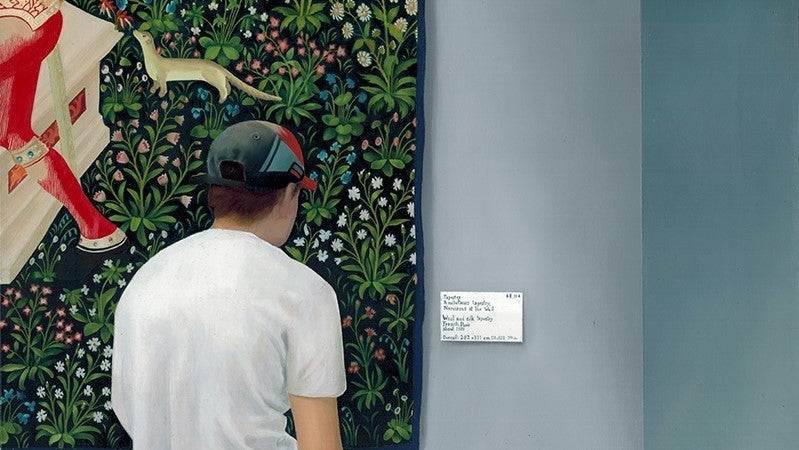Umbilicus

Artists: Jean Claracq, Paul Mpagi Sepuya, Elle Pérez, Paul Rouphail.
The generations before us have exhausted the real, its productions, its uses of representation and its tools of classification. The real has been dissected, quartered. So much so that we are now plunged into virtual reality. Our common space is going through an identity crisis and is once again becoming a territory of experimentation and questioning. Interrogate our reality, our common space is inevitably to question, with modesty or fury, the places of our « intimacy » and the forms that result from it.
The four young artists presented in this exhibition lead us into a movement to the inside. Paul Mpagi Sepuya, Jean Claracq, Paul Rouphail and Elle Pérez draw from their relationships with the world the necessary subjectivity to produce their works. A world where identities, if are multiple, are also potential. Flirting with the freedom offered by the spread of the virtual in our shared environments, the works of these young artists attempt to explore a space of reception for the intimate in what it can be the most political. All of them start from what they know, Jean Claracq creates paintings where the outskirts of our cities meet the interiors of our flats of young precarious people. The views of these painted images are those of our Instagram and the activities those of our boredom. The realism of Jean Claracq’s paintings with their digital texture is conceptually reminiscent of Gustave Courbet’s search for reality.
A century and a half earlier, he also found, in his close environment, the inspirations necessary for the realization of works whose daily subjects became historical paintings. Paul Rouphail’s productions also explore what immediate reality puts at his disposal. Cigarettes, Red Bull cans, cut-out newspaper, pieces of landscape pieces and sunglasses are all visual gimmicks assembled to create pictorial sculptures. The extreme realism of the artist’s works makes them « trompe l’oeil ». If this technique known its golden age during the Italian and Flemish renaissance of the 15th and 16th centuries, digging into reality to make it even more sublime, here, the trompe l’oeil is only intended to accentuate a melancholic laziness. The arrangement of the objects on the canvas and the finesse of execution are reminiscent of René Magritte’s interior scenes, whose surrealism forged the imagery of a generation trying to resist to the onslaught of History. The path to intimacy followed by these artists appears as a means of resistance. These productions force us to leave the illusion that we can have a thought on everything in order to refocus on what we know, what we have access to…
By observing the work of Paul Mpagi Sepuya, a sentence from JMG Le Clézio’s book La Guerre resonates:
« Sometimes I go out on my own body and fix my face on a brick wall. I throw it away and fix it on the wall with nails. I don’t do this with thoughtor desire, I do it simply as one takes off a piece of clothing before going to sleep. »(1)
The artist, born in 1982 in California, creates staging photographic . realized in the intimacy of a studio, they are reminiscent of those 19th century painters who tried to hide their inventions of ambient puritanism. The artist’s links with his subjects, with their bodies and with his own appear to be an insubordination in an America in the grip of his original demons. The eroticized gay black body becomes the flag carrier of a motor and creative intimacy. Elle Pérez’s photographs are set in this affectionate distance between the artist and the models. She follows and photographs these people who have decided to viscerally oppose morality and all that it has to offer. Elle Pérez’s images thus explore the question of gender and confront us with the inevitable deconstructions that we will have to generate if we wish to continue living together.
The distance between us is widening and these four artists invite us to reopen our eyes in order to produce the new visions of the world that we still have to write and nourish. It is then a question of becoming a society. Create a society, of smoke or of paper. To find each other. To touch each other. To look at each other.
[1]LE CLEZIO, JMG, La Guerre, Editions Gallimard, 296 pages, 1970
Margaux Bonopera